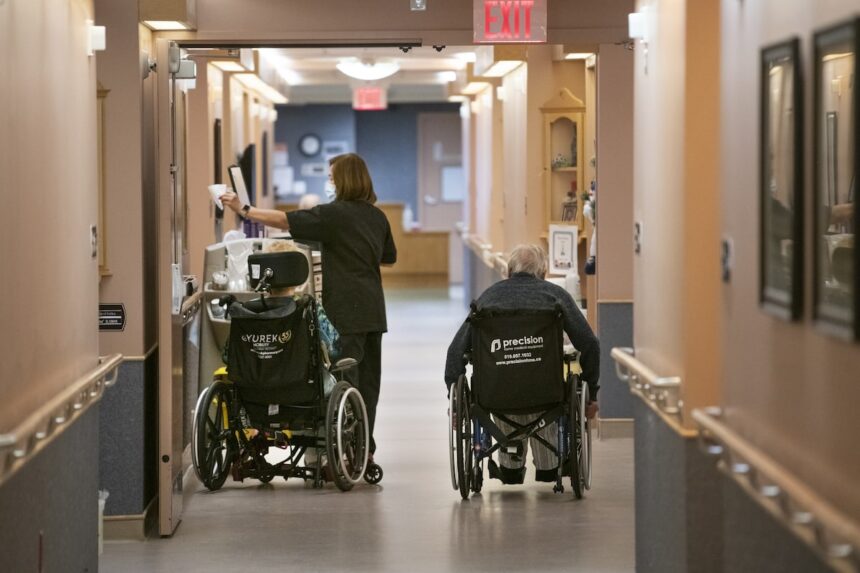The morning light filters through the curtains of Maureen Stevenson’s East Vancouver apartment as she organizes her weekly pill container. At 72, the retired elementary school teacher takes six different medications and sees four specialists for various chronic conditions.
“When I was young, we never worried about healthcare this way,” she says, adjusting her glasses. “My parents just went to their family doctor for everything. Now I have a calendar just to keep track of appointments, and I’ve been on a waitlist for a hip replacement for 19 months.”
Maureen represents the leading edge of a demographic wave crashing into Canada’s already strained healthcare system. As 9.6 million baby boomers move deeper into their senior years, provincial healthcare systems are bracing for unprecedented demands on services, staff, and budgets. But experts warn that despite years of warnings, most provinces still lack comprehensive strategies to address what some are calling a “silver tsunami.”
Dr. Samir Sinha, Director of Geriatrics at Sinai Health System in Toronto, has been sounding the alarm for over a decade. “We’ve known this demographic shift was coming since the 1960s, yet our planning remains remarkably short-term,” he explains during our interview at his office. “What we’re seeing now is merely the beginning of a 30-year demographic transformation that will fundamentally reshape healthcare delivery in Canada.”
The numbers are sobering. According to Statistics Canada, seniors currently account for about 18% of the population but consume nearly 44% of all healthcare spending. By 2036, when the last boomers reach 70, seniors will represent about 25% of Canadians. The Canadian Institute for Health Information projects healthcare spending could increase by $93 billion annually by 2041 due to population aging alone.
The pressures are already evident. In British Columbia’s Fraser Valley, Gareth Williams, a hospital administrator who requested his real name not be used, describes the daily reality: “Our emergency departments are increasingly filled with seniors experiencing complications from chronic conditions. We’re seeing patients in their 70s and 80s who might occupy a bed for weeks because there’s nowhere appropriate to discharge them to.”
What makes the boomer cohort particularly challenging for healthcare systems is their distinct profile compared to previous generations. They’re living longer with multiple chronic conditions, have fewer adult children to provide care, and hold higher expectations for quality of life in their later years.
In Winnipeg, Janet Klassen, 69, exemplifies these changing expectations. After a successful career in financial services, she remains physically active and engaged in community volunteering despite managing diabetes and hypertension. “My parents’ generation often accepted whatever care they received without question,” she reflects. “My friends and I research our conditions, join online support groups, and expect to be partners in our care decisions.”
The provincial response to this demographic shift varies dramatically across Canada. Ontario’s Ministry of Health has developed a Seniors Strategy that includes expanded home care services and specialized geriatric teams, though implementation remains inconsistent. Quebec has invested in an innovative network of community-based seniors’ health centers called Groupes de médecine de famille.
However, many provinces appear to be addressing the challenge piecemeal rather than comprehensively. Manitoba and Saskatchewan have focused primarily on expanding long-term care beds, while Alberta has prioritized acute care capacity. British Columbia has emphasized aging-in-place initiatives but struggles with implementation across diverse communities.
Dr. Ivy Bourgeault, professor and Research Chair in Gender, Diversity and the Professions at the University of Ottawa, sees workforce planning as the critical missing piece. “We’re still training healthcare professionals using models designed for the 1980s,” she argues. “We need more geriatricians, but also more nurse practitioners specializing in geriatrics, more community-based care workers, and new roles that don’t even exist yet.”
During a recent visit to the Golden Sunset seniors’ residence in Victoria, I observed the practical implications of these workforce gaps. The facility director confided that they hadn’t had a permanent physician visit in over eight months, relying instead on telehealth consultations and emergency room transfers when residents’ conditions deteriorated.
Indigenous communities face particularly acute challenges. In northern Manitoba, elderly members of the Norway House Cree Nation must travel hundreds of kilometers for specialized care. Community health director Marion Apetagon describes the toll: “Our elders are separated from family, from cultural supports, from traditional healing practices. The provincial system isn’t designed with our needs in mind.”
Financial pressures compound the challenge. The most recent fiscal sustainability report from the Parliamentary Budget Officer projects that provincial healthcare spending must increase by an average of 5.1% annually just to maintain current service levels as the population ages—well above expected economic growth rates.
Some provinces are exploring innovative approaches. Nova Scotia has piloted integrated care teams where physicians, nurses, pharmacists, and social workers collaborate to manage complex elderly patients. British Columbia’s “hospital at home” program enables certain patients to receive acute-level care in their residences. These initiatives show promise but remain exceptions rather than system-wide transformations.
Private capital is also flowing into the gap. Corporate investment in retirement communities, home care services, and health technology targeting seniors has surged. This raises questions about equitable access to care as the system evolves.
As evening settles over Vancouver’s English Bay, Maureen Stevenson watches the sunset from her balcony. “I worry about what happens when I need more help,” she admits. “My daughter lives in Calgary, I can’t afford private care, and I hear the waitlists for government services are years long.”
For Canada’s provinces, the challenge isn’t just clinical or financial but fundamentally ethical: how to deliver dignified, effective care to a generation that built modern Canada while ensuring sustainability for those who follow. The answers remain elusive, but the clock is ticking.






